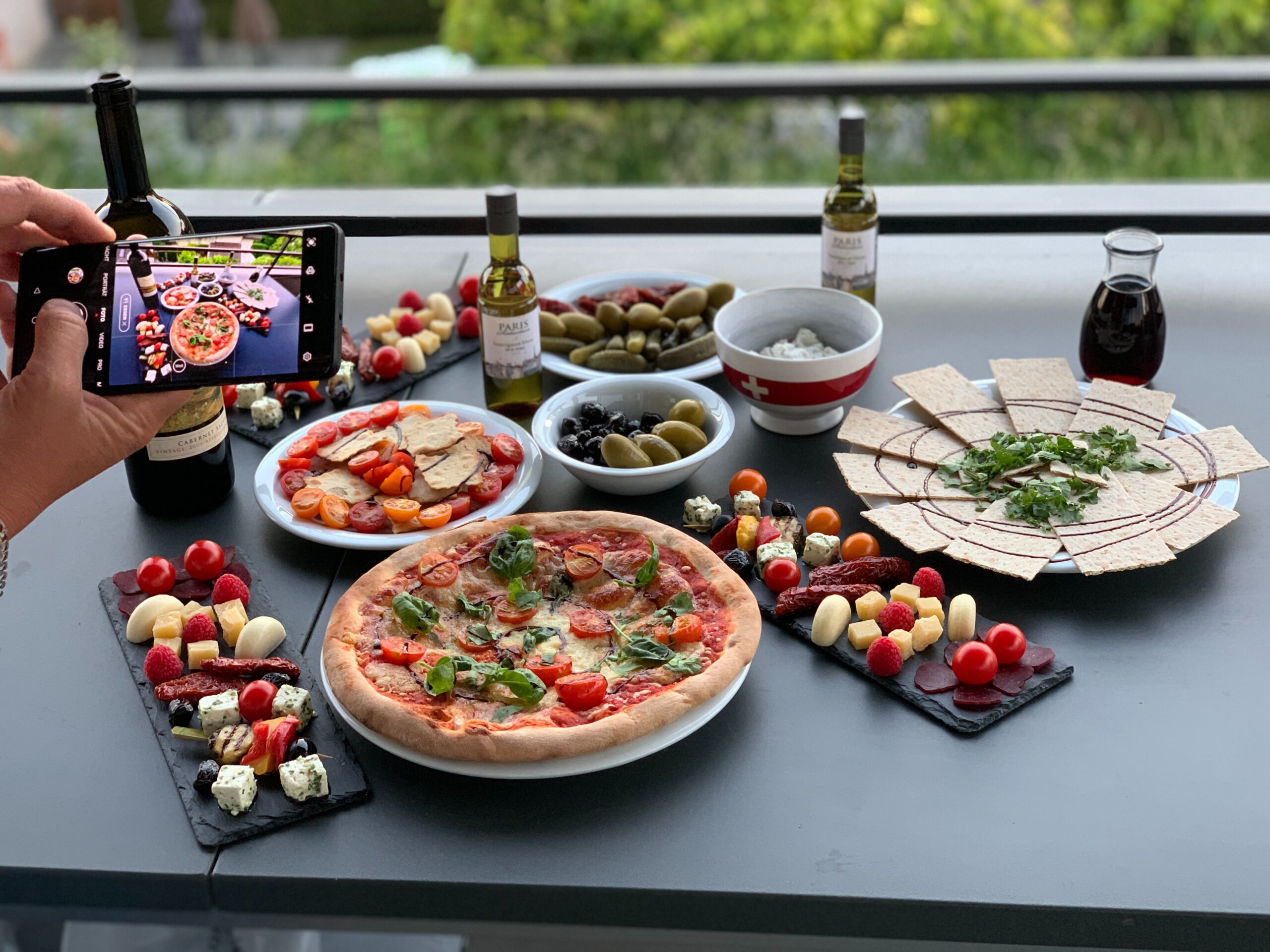“What should the style of professionalism in foodandwine be like in 2023?
By Carol Agostini
In the captivating universe of foodandwine, the debate on the stylistic approach to professionalism is always alive. The question is posed: should it adapt to the lightness of modern times or maintain an elegant, sober, and tasteful tone? It’s a dilemma reflected in contemporary gastronomic culture, where the evolution of tastes and trends meets tradition and sophistication.

The world of foodandwine is a stage in constant evolution, where chefs, sommeliers, gastronomic critics, and industry experts move skillfully between creativity, knowledge, and precision. Professionalism in this field requires a subtle balance between innovation and respect for roots, between boldness and refinement.
On one hand, there are those who argue that modernity demands a transformation in the style of professionalism in foodandwine. The digital era and the acceleration of the pace of life lead to a growing preference for simplicity, accessibility, and lightness in gastronomic experiences. This approach suggests that even professionalism should adapt to a more informal language, closer to people, less formal, and more inclusive.
On the other hand, there is a firmly rooted opinion that advocates for the beauty and intrinsic value of sobriety and elegance in the world of food and wine. Professionalism is seen as an untouchable pillar, an embodiment of savoir-faire, where respect for history, etiquette, and the refinement of gestures remains essential. This approach argues that maintaining an elegant and tasteful style is what truly distinguishes professionals in this sector and should never be sacrificed on the altar of modern trends.

The main challenge lies in the ability to find a meeting point between these seemingly opposite perspectives. Is it possible to integrate the innovation and freshness of modern times without compromising quality and elegance? The answer might lie in the flexibility and adaptability of industry operators, in the art of balancing the ancient and the new, the sophisticated and the casual, without losing sight of the essence of the food and wine experience.
In the global market, the evolution of professional style in food and wine can significantly influence commercial success. The trend towards more accessible and informal communication can attract a wide range of consumers, increasing the visibility and popularity of a brand or restaurant. However, maintaining a refined and classy approach can ensure the loyalty of a more traditional and sophisticated audience.
A tangible example of this challenge is represented by the increasingly prominent presence of social media in the world of food and wine. Platforms like Instagram and TikTok have revolutionized how gastronomy is presented and consumed. The question is: how can industry professionals adapt their style and professionalism to these new channels without compromising their integrity and quality?

The world of food and wine, with its variety of flavors, aromas, and cultures, reflects the complexity of modern tastes. Professionalism in this field is not just a matter of culinary or oenological competence but also of presentation, communication, and adaptability.
The simplicity and lightness of current times have brought about a sort of democratization in the sector, pushing many to seek more accessible, less formal but equally satisfying culinary experiences. This has influenced not only how dishes and wines are prepared and presented but also the communication surrounding these products. The use of social media and digital platforms has become crucial to reach an increasingly vast and diversified audience. The ability to communicate clearly, engagingly, and authentically has become an essential part of professionalism in the industry.

On the other hand, there is still a solid base of consumers who appreciate and seek elegance, refinement, and good taste in their gastronomic experiences. Professionalism for this audience means preserving tradition, respecting the history behind each dish and wine, maintaining a level of exclusivity and distinction.
The meeting point between these two perspectives could be represented by intentional flexibility. Chefs, sommeliers, and industry experts in foodandwine could adopt a style that embraces both the informal and modern approach as well as elegance and sophistication. This does not mean compromising quality or authenticity but rather adapting to the changing needs of a diversified clientele.
In fact, many prominent figures in the gastronomic world have embraced this idea, trying to combine the best of both worlds. Presenting exquisite dishes in an informal context, creating high-quality wines without being excessively elitist in their promotion are just some of the strategies adopted.
In terms of the market, adapting professional style seems to bring tangible benefits. Brands and restaurants that have embraced this flexibility have been able to reach a wider audience, appealing to both traditional and modern, young consumers. The key seems to be consistency in offering authentic and quality experiences, regardless of the adopted communicative style.
In the foodandwine sector, market trends related to the evolution of style and professionalism have been observed. For instance, studies and market analysis have highlighted an increase in demand from consumers for more accessible, authentic, and less formal gastronomic experiences, in line with the social and cultural changes of modern times.

This change in trend has led many restaurants, chefs, and wine producers to adopt more informal and engaging marketing and communication strategies, often through social media and other digital platforms. The informal approach, the valorization of the story behind each dish or wine, and transparency in the production process have become key elements in capturing the attention of an increasingly diverse and quality-conscious audience.
On the other hand, there is still strong demand for refined, exclusive, and high-class culinary experiences. There are market segments that continue to seek tradition, elegance, and sophistication in their foodandwine experiences.
This duality in the food and wine market has led many industry professionals to seek a balance between these two extremes, adopting flexible approaches that can satisfy a wide range of consumers. Marketing and communication strategies that blend elements of simplicity and lightness with refinement and elegance seem to attract a wider and diversified audience, allowing brands and restaurants to reach a broader and more varied customer base.

Remember that the foodandwine market is extremely dynamic and varied, with many facets and different segments. Successful strategies can vary based on geographical location, target clientele, and the peculiarities of the product or service offered.
Professionalism in the food and wine world is no longer solely defined by a single aesthetic or style but rather by a set of skills, adaptability, and authenticity. Finding a balance between tradition and innovation, between elegance and simplicity, seems to be the key to lasting success in an ever-evolving culinary landscape, without completely abandoning one style in favor of the other but rather blending both to satisfy an increasingly diversified and demanding audience.
Italian gastronomy: A journey through culinary history that conquers the world
Italian gastronomy is a true culinary saga that unfolds between the past and the present, having traversed epochs of triumphs and evolutions that have made it an icon of international cuisine. With a heritage of over 70,000 recipes, Italian cuisine rests its foundations on the quality of raw materials and the essence of regional flavors.
The journey of this culinary tradition underwent an epochal transformation during the twentieth century. While in the 1950s, international tourism counted 25 million visitors worldwide, by 2014, this number exploded, reaching over one billion and one hundred million. Such growth triggered an exponential increase in the turnover of the tourism sector, with exports reaching 1,159 billion dollars (equivalent to 873 billion euros) in 2013.
At a time when the United States was already experiencing mass tourism, Italy presented itself as a country undergoing transformation, with a predominant rural population and a newly initiated industrialization process. Tourism in Italy was then an elitist phenomenon, accessible to only a few privileged individuals.

Italian gastronomy has traversed centuries of evolution, stemming from a French hegemony that extended for over three centuries in Europe. The grand Italian hotels, emerging between the late nineteenth century and the First World War, bore French names like Des Bains, Excelsior, Ritz, Palace, Splendid, Royale, De Russie, D’Angleterre, Hermitage.
During the Renaissance period, Italy not only dominated Europe culturally but also gastronomically. Italian cuisine was at the center of a European rebirth, serving as a bridge between the rich Islamic civilization of the southern Mediterranean and a resurging Europe emerging from Germanic invasions.
Italy’s rise as a protagonist in global tourism manifested in the second half of the twentieth century, partly thanks to the Marshall Plan for the reconstruction of Europe. The country industrialized, became modern while retaining an ancient heart, a rebirth of the Renaissance.
This international success was fueled by the valorization of the territory, excellent raw materials, and the aesthetics of the dishes. Italy, thanks to the Mediterranean climate and the diversity of its productions, boasts an enviable position in the world of food and wine.
Italian cuisine, with its fusion of aristocratic and popular traditions, stands out for its antiquity and its use of excellent raw materials. This unique tradition has been enriched by international influences, transforming tomatoes, corn, potatoes, and other ingredients into Italian culinary symbols.
The peak of Italian cuisine’s success reached its zenith between the mid-1970s and 1980s, marking the decline of French Nouvelle Cuisine. Italian superiority was manifested through the excellence of products, the technical skills of chefs, and the beauty in culinary presentation.
Personalities like Carlo Petrini, the founder of Slow Food, and Oscar Farinetti, with Eatitaly, have contributed to valorizing and promoting Italian gastronomy worldwide, representing an excellent response to the dilemma of how to effectively promote the Italian enogastronomic style.
Italy now positions itself as one of the most coveted enogastronomic destinations in the world, thanks to its ability to engineer its history and tradition, emerging with a combination of ancient flavors and rigorous contemporary techniques.
The future of Italian Style lies in the valorization of the territory, cultural and biological biodiversity, natural agriculture, and respect for the biological cycles of plants and animals. EXPO 2015, held in Milan, was an occasion to compare the Italian approach with the chemical and GMO approaches of other countries, promoting Italianity with rigor, merit, and professionalism.
Italy, with its enogastronomic heritage, continues to represent a winning marketing model, a blend of history and modernity, steeped in passion and tradition, which fascinates and conquers the world with its dishes, wines, and unparalleled culinary culture.”

Siti partners articles: https://www.foodandwineangels.com/ https://carol-agostini.tumblr.com/ https://www.papillae.it/

Lascia un commento